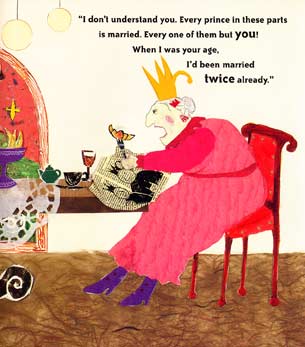A national organization of pediatricians, the American College of Pediatricians came out with a surprisingly strong endorsement of abstinence education. I say surprisingly because most professional organizations are usually to the left on controversial topics like abstinence.
Their report said: The American College of Pediatricians strongly endorses abstinence-until-marriage sex education and recommends adoption by all school systems rather than "comprehensive sex education". This position is based on "the public health principle of primary prevention - risk avoidance in lieu of risk reduction," upholding the "human right to the highest attainable standard of health."[1]
They point out the problems associated with teenage sexual activity:
By every measure, adolescent sexual activity is detrimental to the well being of all involved, especially young women, and society at large. Children and adolescents from 10 to 19 years of age are more at risk for contracting a sexually transmitted infection (STI) than adults.[2] This is due to the general practice of having multiple and higher risk sexual partners, and to the immaturity of the cervical tissue of girls and young women. The CDC recently stated that of the 19 million new cases of STIs annually reported in the United States, 50 percent occur in teens and young adults under 25 years of age.[3] Twenty-five percent of newly diagnosed cases of HIV occur in those under 22 years of age.[4] This translates into one in four sexually active female adolescents being infected with at least one STI.[5]
Bacterial STIs may cause life-threatening cases of pelvic inflammatory disease (PID) and infertility. Viral STIs which include herpes, the Human Papilloma Virus (HPV) and HIV are generally incurable. Herpes afflicts its victims with life-long painful recurrences, may be passed on to sexual partners even when asymptomatic, and may be life threatening to newborns if passed on at birth during vaginal delivery. HPV is found among 90 percent of sexually active young adults and teens.[6] While often self-limited, HPV has high risk strains that may persist for life and cause cancer of the cervix. HIV not only may cause premature demise, but also significant suffering with life-long dependence on multiple toxic and costly medications. The CDC estimates that STIs cost the U.S. health care system as much as $15.3 billion dollars annually.[7]
Adolescent pregnancy is similarly associated with adverse socioeconomics that have an impact on the family, community and society at large. One in thirteen high school girls becomes pregnant each year.[8] Adolescent pregnancy results in decreased educational and vocational opportunities for the mothers, an increased likelihood of the family living in poverty, and significant risk for negative long-term outcomes for the children. For example, children of adolescent mothers are more likely to be born prematurely and at a low birth weight; suffer from poor health; perform poorly in school; run away from home; be abused or neglected; and grow up without a father.[9]
They talk about the emotional scars from teenage sex:
Even if sexually active teens escape acquiring sexually transmitted infections (STIs) and becoming pregnant, few remain emotionally unscathed. Overall, one in eight teens suffers from depression,[10] and suicide has risen to become the third leading cause of death for adolescents, paralleling the rise in STIs within this population.[11] Infection with an STI has long been recognized as a cause for depression among teens. More recently, however, adolescent sexual activity alone has been acknowledged as an independent risk factor for developing low self-esteem, major depression, and attempting suicide.[12] In studies that controlled for confounding factors, sexually active girls were found to be three times as likely to report being depressed and three times as likely to have attempted suicide when compared to sexually abstinent girls.[13] Sexually active boys were more than twice as likely to suffer from depression and seven times as likely to have attempted suicide when compared to sexually abstinent boys.[14] This is not mere coincidence. Scientists now know that sexual activity releases chemicals in the brain that create emotional bonds between partners. Breaking these bonds can cause depression, and make it harder to bond with someone else in the future.[15]
Sexual activity is defined as genital contact. This includes mutual masturbation, as well as oral, vaginal and anal intercourse. While only vaginal intercourse may result in pregnancy, all of these practices may spread STIs, and lead to emotional trauma. Abstaining from all sexual activity is the only 100 percent safe and effective way to avoid teen pregnancies, STIs, and the emotional fallout of adolescent sexual activity. Almost 40 years of emphasis on "safer sex" with "values-neutral sex education," condoms and contraception has clearly failed our young people. The effectiveness of abstinence sex education in delaying the onset of sexual debut, on the other hand, has been demonstrated in rigorous scientific studies. Abstinence education does not occur in a vacuum, making it especially difficult to separate its influence from the opposing influence of the media and cultural milieu. Nevertheless, five out of seven programs recently reviewed showed a significant reduction in sexual initiation rates (two programs showed rates decreased by half).[16] Evaluation of community-based abstinence programs in peer-reviewed journals showed that they are effective in significantly reducing pregnancy. According to an April 2008 report by the Heritage Foundation "fifteen studies examined abstinence programs and eleven reported positive findings of delayed sexual initiation."[17] Reviews by The Institute for Research and Evaluation state that "several well designed evaluations of abstinence programs have found significant long- term reductions in adolescent sexual activity."[18] These do not begin to thoroughly evaluate the hundreds of ongoing programs.
They address the difference between the abstinence until marriage versus comprehensive sex education approach:
In its endorsement of abstinence-based sex education, the College calls attention to the scientific controversies surrounding alternative educational platforms. Most sex education curricula fall into two categories, abstinence-until-marriage or comprehensive sex education programs (occasionally, referred to as "abstinence plus" programs). Recently, abstinence education has been accused of not providing critical health information about condom use. Abstinence education curricula, however, do not discourage the use of condoms; rather they note that chastity obviates the need for condoms. Abstinence education programs do not claim that condoms have no place in preventing STIs. Comprehensive programs, on the other hand, are misleading in the emphasis they place on condom use. These programs give teens the impression that condoms make sexual activity safe. In reality, there has been much conflicting medical literature on the effectiveness of condoms in preventing STIs since the 2000 NIH report on the subject and much of the controversy remains unresolved.[19] Teens must be informed that condoms do not offer complete protection from either pregnancy or STIs.
The College position supporting abstinence-until-marriage education, unlike alternative education platforms, also recognizes the unique neurobiology of adolescent brains. The frontal cortex of the adolescent brain is still in development and unable to make the consistently wise executive decisions necessary to control action based on emotional input. Researcher Jay Giedd has stated that, "Until the mid-twenties young people do not have the physical brain capacity to make fully mature decisions."[20] programs that address smoking, drugs, and alcohol use. Emphasis on contraceptive methods undermines the authority of parents and the strength of the abstinence message. This approach reinforces the ubiquitous (yet erroneous) message presented by the media that engaging in sexual activity is not only expected of teens, but is the norm. Adolescent brains are not equipped to handle these mixed messages. Parents and teachers need to "function as a surrogate set of frontal lobes, an auxiliary problem solver" for their teens, setting firm and immutable expectations.[21] Adolescents need repetitive, clear and consistent guidance.
And they endorse involving parents in the sex education process:
As families address this issue of sex education, the American College of Pediatricians recommends that parents be fully aware of the content of the curriculum to which their children are being exposed. The national "Guidelines for Comprehensive Sex Education" that were drafted by the Sexuality Information and Education Council of the United States (SIECUS) place strong emphasis on "values neutral" sex education beginning in kindergarten. According to these guidelines, children between the ages of 5 to 8 should be taught not only the anatomically correct names of all body parts, but also the definitions of sexual intercourse, and masturbation.[22]
Overall, these comprehensive programs only emphasize "safer sex." Many comprehensive programs also provide sexually erotic material to teens with explicit condom demonstrations. Other programs suggest alternative types of sexually stimulating contact (referred to as "outercourse") that would not result in pregnancy but still could result in STIs. Some of these activities, depending on the ages of those involved and the state in which they occur, could actually be illegal. These education programs can break down the natural barriers of those not yet involved in sexual activity and encourage experimentation. Additionally, many programs emphasize that teens do not need parental consent to obtain birth control and that teens therefore need not even discuss the issue with them.[23]
Discouraging parental involvement eliminates one of the most powerful deterrents to sexual activity, namely, communication of parental expectations.[24] Firm statements from parents that sex should be reserved for marriage have been found to be very effective in delaying a child's sexual debut. Parental example and "religiosity" have also been found to be similarly protective. Adolescents reared by parents who live according to their professed religious faith [25] and are actively involved in their worship community,[26] are more likely to abstain from sexual activity as teens. Successful sex education programs involve parents and promote open discussion between parents and their children.
The American College of Pediatricians also believes parents should be aware of the current state of funding, and government involvement in sex education choices. Comprehensive programs receive seven to twelve times the funding of abstinence programs.[27] However, according to a recent study by the Department of Health and Human Services, comprehensive programs do not give equal time to abstinence.[28]
And they address the efforts to discredit abstinence education:
In 2004 Congressman Henry Waxman of California presented a report before Congress critical of the medical accuracy of abstinence education curricula.[29] The Mathematica Study was similarly critical of the medical accuracy of abstinence education programs.[30] However, in 2007 the U.S .Department of Health and Human Services conducted an extensive review of nine comprehensive sex education curricula using the same methods employed by Congressman Waxman and the Mathematica Study. These comprehensive programs were found to have no better record for medical accuracy. The HHS review also found that the comprehensive programs were hardly comprehensive. The amount of discussion dedicated to "safer sex" exceeded that spent on abstinence by a factor of up to seven. Some of the programs failed to mention abstinence altogether. None of the programs carefully distinguished between reducing and eliminating the risks of sexual activity, and nearly every program failed to mention the emotional consequences of early sexual activity. Although some of the comprehensive programs showed a small effect in reducing "unprotected" sex (7 of 9 programs) and to a lesser extent in delaying sexual debut (2 of 8 programs), the impact did not extend beyond six months.[31]
According to a 2004 Zogby Poll, 90% of adults and teens agree with The American College of Pediatricians position that teens should be given a strong abstinence message.[32] Programs that teach sexual abstinence until marriage are about much more than simply delaying sexual activity. They assist adolescents in establishing positive character traits, formulating long-term goals, and developing emotionally healthy relationships. These programs increase the likelihood of strong marriages and families - the single most essential resource for the strength and survival of our nation.
Three cheers for the American College of Pediatricians.







